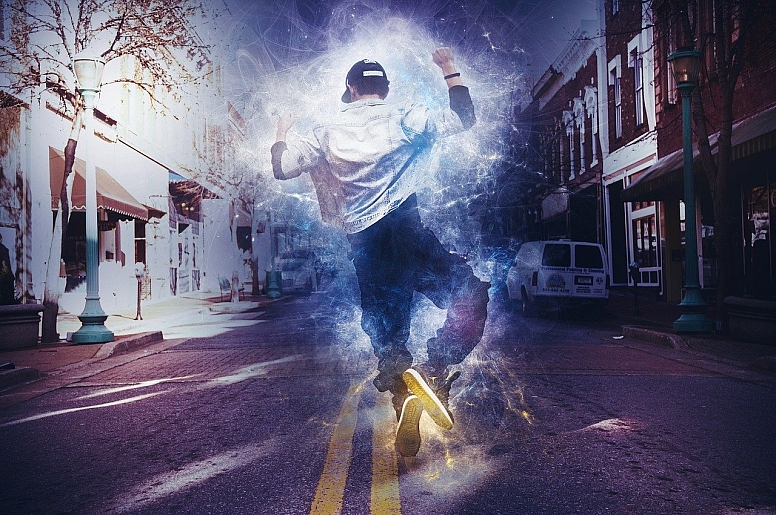
The Most Famous Streetwear Brands in London
Streetwear Culture in London
London, a city renowned for its vibrant and diverse culture, stands as a global hub for fashion, and more specifically, streetwear. Streetwear, which began as a subcultural phenomenon rooted in the skateboarding and hip-hop scenes of the 1980s, has since evolved into a dominant fashion genre. It represents a fusion of high fashion and urban style, characterized by casual, comfortable, and often oversized clothing, adorned with bold graphics and logos.
In London, streetwear is not just about clothing; it is a lifestyle and a statement. The city’s streetwear scene is deeply intertwined with its music, art, and youth culture. Londoners have a unique way of blending eclectic styles, often combining high-end designer pieces with more accessible streetwear brands. This mix of luxury and street elements has cemented London as a critical player in the global streetwear market.
Significance of London in the Global Streetwear Scene

London’s streetwear influence extends far beyond its borders, impacting fashion trends worldwide. The city is home to some of the most influential streetwear brands and designers who have redefined the genre. Brands like Palace Skateboards and A-COLD-WALL* have garnered international acclaim, shaping the aesthetic and direction of modern streetwear.
Moreover, London’s diverse cultural landscape provides a rich tapestry of influences that contribute to its unique streetwear style. From the gritty, rebellious vibes of East London to the polished, avant-garde fashion of West London, the city's streetwear reflects its multifaceted identity. This cultural melting pot not only attracts global talent but also fosters innovation and creativity within the streetwear community.
In essence, London is not just a participant in the global streetwear movement; it is a leader and a trendsetter. The city’s streetwear brands are celebrated for their originality, quality, and cultural relevance, making London an indispensable part of the streetwear world.
Historical Context
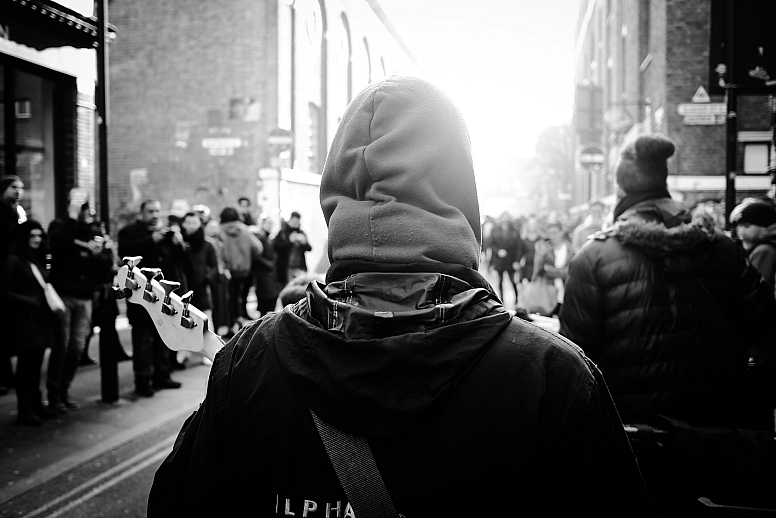
Evolution of Streetwear in London
The evolution of streetwear in London is a fascinating journey that reflects broader cultural shifts within the city. It all began in the late 1970s and early 1980s, when the punk movement started to lose its grip, and new subcultures began to emerge. Streetwear as a concept was not yet defined, but the seeds were being sown.
1980s: The Roots of Streetwear The 1980s saw the rise of hip-hop and skateboarding, two cultural movements that significantly influenced streetwear. London, with its dynamic music scene and burgeoning skate culture, became a fertile ground for this new style. Brands like Stussy, which were born in the surf and skate cultures of California, began to find an audience in London. The vibrant, rebellious spirit of hip-hop culture, coupled with the practicality and style of skatewear, laid the groundwork for what would become streetwear.
1990s: The Birth of British Streetwear The 1990s marked the formal emergence of streetwear as a distinct fashion genre in London. This decade saw the founding of homegrown brands that began to define the British streetwear identity. Labels like Maharishi and Duffer of St. George started to gain popularity, blending military influences with urban style. The Britpop movement also played a significant role, with bands like Oasis and Blur popularizing casual, street-influenced fashion. This period was characterized by a mix of influences, from sportswear to military surplus, creating a unique British streetwear aesthetic.
2000s: The Rise of Iconic Brands The early 2000s saw the rise of some of the most iconic streetwear brands that continue to dominate the scene today. Palace Skateboards, founded in 2009, quickly became a heavyweight in the industry, known for its bold graphics and skate culture roots. This era also saw the international influence of London’s streetwear grow, as brands began to collaborate with global giants and were worn by celebrities and influencers worldwide. The fusion of high fashion and streetwear became more pronounced, with designers like Kim Jones and Virgil Abloh drawing inspiration from street culture.
2010s: Streetwear Goes Mainstream By the 2010s, streetwear had fully entered the mainstream, and London was at the forefront of this movement. Brands like A-COLD-WALL* and Trapstar emerged, bringing new perspectives and aesthetics to the scene. The influence of grime music, with artists like Skepta and Stormzy, helped to propel London streetwear into the global spotlight. The decade was marked by high-profile collaborations between streetwear brands and luxury fashion houses, blurring the lines between streetwear and high fashion. Social media also played a crucial role in the proliferation of streetwear, with Instagram and other platforms providing a global stage for London’s streetwear culture.
Influence of Music, Art, and Youth Culture
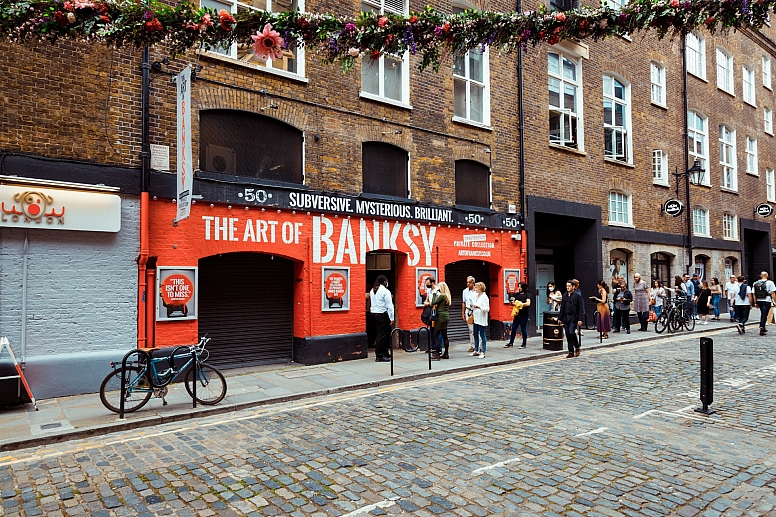
Music, art, and youth culture have always been integral to the evolution of streetwear in London. The city’s streetwear is not just a fashion statement but a reflection of its vibrant cultural scene.
Music Influence: Music has had a profound impact on London’s streetwear. The punk rock scene of the 1970s, the rave culture of the 1980s and 1990s, and the grime and hip-hop scenes of the 2000s and beyond have all shaped streetwear trends. Grime music, in particular, has had a significant influence, with artists like Dizzee Rascal, Skepta, and Stormzy not only wearing but also endorsing and collaborating with streetwear brands. This connection has helped to embed streetwear deeply within the fabric of London’s urban culture.
Art and Design Influence: Art and design have also played crucial roles in shaping London’s streetwear. The city’s rich street art scene and iconic artists like Banksy have inspired many streetwear designs. The use of bold graphics, innovative prints, and rebellious themes in streetwear often echoes the spirit of street art. Additionally, the intersection of fashion and art in London has led to collaborations between streetwear brands and artists, resulting in unique, limited-edition pieces that blur the lines between fashion and art.
Youth Culture: Youth culture is perhaps the most significant driver of streetwear in London. The city’s young people have always been at the forefront of fashion innovation, constantly pushing boundaries and redefining norms. From the mods and rockers of the 1960s to the ravers of the 1990s and the grime kids of today, each generation has left its mark on London’s streetwear scene. The DIY ethos, the desire for self-expression, and the rejection of mainstream fashion norms are all hallmarks of youth culture that continue to drive the evolution of streetwear.
The historical context of London’s streetwear is rich and varied, influenced by a multitude of factors, from music and art to the ever-changing dynamics of youth culture. This backdrop sets the stage for understanding the major streetwear brands that have emerged from this vibrant scene.
Major Streetwear Brands in London
Palace Skateboards

History and Background
Founded in 2009 by Lev Tanju, Palace Skateboards has quickly become one of the most influential streetwear brands not just in London, but globally. What started as a small skate team has transformed into a cultural phenomenon. The brand's name, derived from Tanju’s initial crew, the "Palace Wayward Boys Choir," reflects its roots in London’s skateboarding scene.
Key Collections and Collaborations
Palace is renowned for its bold graphics, playful logos, and distinctive designs that often draw on 90s nostalgia and British humour. The brand's collaborations are highly anticipated and frequently sell out within minutes. Notable partnerships include collaborations with Adidas, Reebok, Ralph Lauren, and even luxury fashion house, Moschino. Each collection blends Palace’s signature streetwear style with the partner brand’s aesthetic, resulting in unique, highly coveted pieces.
Flagship Store Locations
Palace’s flagship store in London is located in the heart of Soho, a vibrant area known for its creative and eclectic energy. The store's design mirrors the brand’s edgy, urban aesthetic, featuring minimalist decor with striking graphic elements. Beyond London, Palace has expanded with flagship stores in New York, Tokyo, and Los Angeles, further cementing its status as a global streetwear powerhouse.
A-COLD-WALL*

Founder and Origins
A-COLD-WALL* was established in 2015 by Samuel Ross, a former protégé of Virgil Abloh. The brand was conceived as a means to explore the interplay between high fashion and street culture, with a particular focus on social commentary. Ross draws inspiration from his upbringing in South London, creating pieces that reflect the city’s architectural and social landscape.
Design Philosophy
A-COLD-WALL* is known for its utilitarian design, architectural silhouettes, and use of unconventional materials. The brand’s aesthetic is a blend of industrial and dystopian elements, often featuring asymmetrical cuts, raw edges, and a muted colour palette. Ross’s designs frequently incorporate functional details such as pockets, straps, and adjustable elements, emphasizing the practical side of streetwear.
Notable Releases and Collaborations
The brand has collaborated with several high-profile names, including Nike, Dr. Martens, and Converse. These collaborations often introduce innovative designs that push the boundaries of traditional streetwear. A-COLD-WALL*’s collections are also known for their thought-provoking themes, addressing issues such as class, environment, and societal structures.
Trapstar
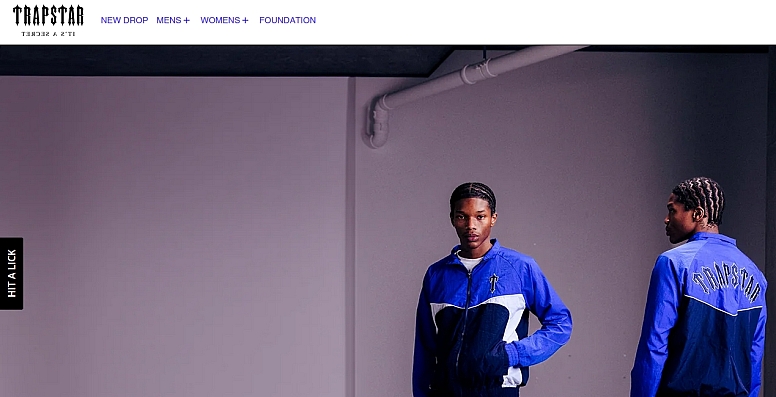
Founders and Inception
Trapstar was founded in 2005 by a trio of friends: Mikey, Lee, and Will. The brand started as a passion project, with the founders printing T-shirts for themselves and their close friends. Over time, Trapstar gained traction within London’s underground scene, thanks to its unique designs and the founders’ connections in the music and entertainment industries.
Influence on Pop Culture
Trapstar’s rise to fame can be attributed in part to its strong ties with the music industry. The brand quickly became a favourite among grime and hip-hop artists, with endorsements from celebrities such as Rihanna, Jay-Z, and Stormzy. This high-profile visibility helped Trapstar transition from an underground label to a mainstream success.
Signature Pieces and Popular Collections
Trapstar is known for its bold graphic prints, military-inspired designs, and striking logos. The brand’s signature pieces include their oversized hoodies, bomber jackets, and graphic tees. Notable collections often feature collaborations with artists and other brands, blending Trapstar’s streetwear aesthetic with various cultural influences.
Grind London
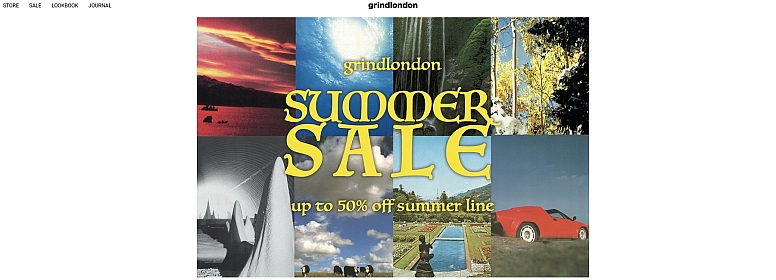
Background and Ethos
Grind London was founded in 2008 by Yosuke and Gareth Skewis, with a mission to create a brand that encapsulates London’s diverse cultural landscape. The brand’s ethos revolves around authenticity, inclusivity, and the celebration of London’s multifaceted identity. Grind London’s designs are a reflection of the city’s eclectic mix of cultures, styles, and influences.
Unique Selling Points
Grind London distinguishes itself with its minimalist yet impactful designs, characterized by clean lines, subtle graphics, and a sophisticated colour palette. The brand often draws inspiration from classic menswear, street culture, and contemporary art, resulting in a unique fusion of styles. Sustainability is also a core principle, with an emphasis on ethical production practices and high-quality materials.
Popular Collections
Grind London’s collections typically feature a range of casual yet refined pieces, including tailored trousers, graphic tees, and outerwear. The brand’s collaborations with local artists and creatives further enhance its connection to London’s vibrant cultural scene. Notable releases often include limited-edition pieces that highlight the brand’s commitment to quality and craftsmanship.
Cav Empt (C.E)
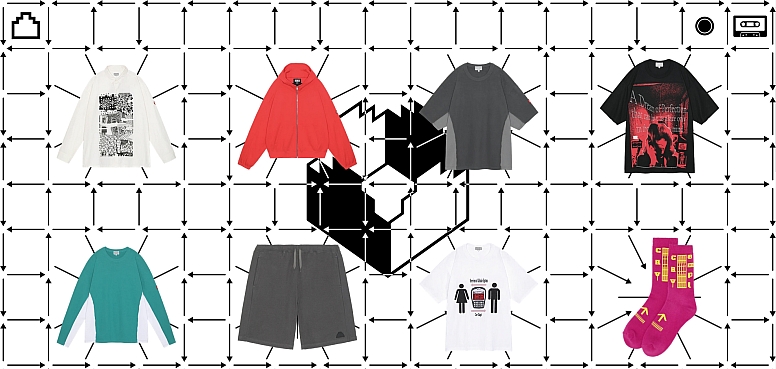
Founders and Artistic Vision
Cav Empt, commonly known as C.E., was founded in 2011 by Sk8thing, Toby Feltwell, and Hishiyama Yutaka. The brand’s name is derived from the Latin phrase “caveat emptor,” meaning “let the buyer beware.” C.E.’s aesthetic is heavily influenced by 90s cyberpunk and dystopian themes, reflecting a futuristic yet nostalgic vision.
Signature Styles and Pieces
C.E. is renowned for its distinctive graphic designs, often featuring glitch art, digital motifs, and futuristic elements. The brand’s clothing ranges from oversized hoodies and graphic tees to tech-inspired outerwear and accessories. Each piece embodies C.E.’s commitment to blending streetwear with high-concept art and design.
Impact on the London Streetwear Scene
Although Cav Empt originated in Japan, it has made a significant impact on London’s streetwear scene. The brand’s unique aesthetic and thought-provoking designs resonate with London’s fashion-forward audience. C.E.’s collaborations with London-based artists and brands further cement its influence and presence in the city’s streetwear culture.
Major Streetwear Brands in London
Daily Paper
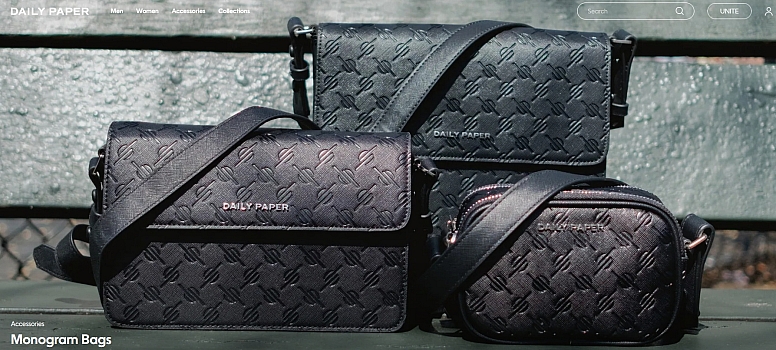
Founders and Background
Daily Paper was founded in 2012 by three friends: Jefferson Osei, Abderrahmane Trabsini, and Hussein Suleiman. Although the brand originated in Amsterdam, it has a significant presence in London and resonates strongly with the city’s multicultural and diverse audience. The founders, of Ghanaian, Moroccan, and Somali descent, respectively, bring a rich blend of cultural influences to the brand’s aesthetic.
Connection to African Culture
Daily Paper’s designs are deeply rooted in African culture and heritage. The brand is celebrated for blending contemporary streetwear seamlessly with traditional African patterns and motifs. This unique fusion creates clothing that looks stylish and tells a story. Daily Paper frequently collaborates with African artists and designers, further highlighting its commitment to cultural authenticity and representation.
Popular Items and Collaborations
Daily Paper’s collections often feature bold prints, vibrant colours, and unique silhouettes. Key pieces include graphic hoodies, track pants, and statement outerwear. The brand’s collaborations are highly anticipated, with partnerships ranging from Puma to Off-White. These collaborations often result in limited-edition items that combine Daily Paper’s signature style with the collaborator’s unique aesthetic.
SCRT (Secret)
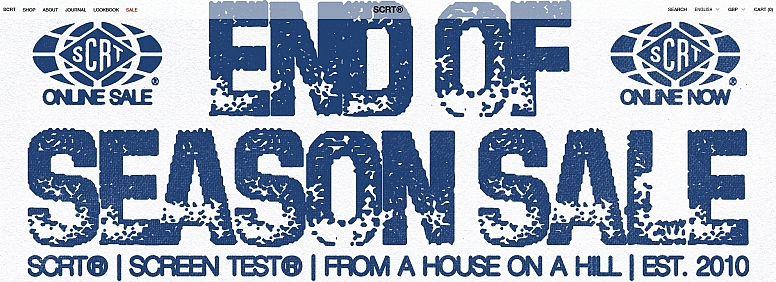
Origin and Development
SCRT, also known as Secret, was founded in London in 2010 by David Hellqvist and Andrew Ibi. The brand started as a small, independent label and has grown steadily, gaining a loyal following for its distinctive approach to streetwear. SCRT’s name reflects its early days of underground, word-of-mouth marketing, and its ethos of creating clothing for those “in the know.”
Design Focus and Standout Pieces
SCRT is known for its minimalist design approach, focusing on high-quality materials and attention to detail. The brand’s clothing often features subtle, thought-provoking graphics and slogans, making each piece a conversation starter. Standout items include graphic tees, oversized hoodies, and functional outerwear. SCRT’s designs are both wearable and versatile, appealing to a broad range of streetwear enthusiasts.
Store Locations and Presence
SCRT maintains a strong presence in London through pop-up shops and collaborations with local retailers. The brand’s commitment to maintaining an element of exclusivity and mystery continues to attract a dedicated fanbase. SCRT also has a robust online presence, making its collections accessible to a global audience.
Emerging Streetwear Brands
Clints
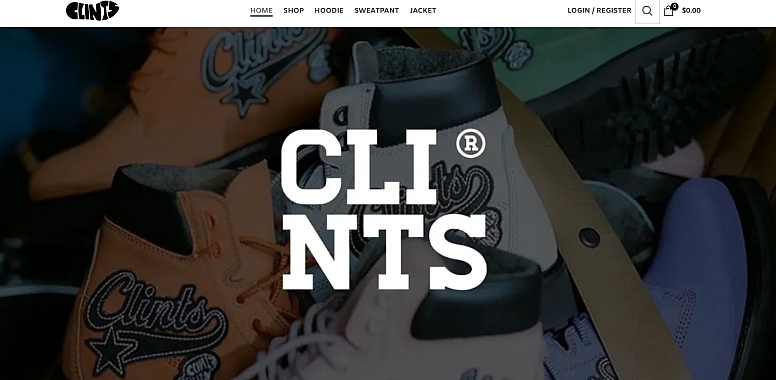
Background and Inspiration
Clints is a rising star in the London streetwear scene, founded by Junior Clint in 2020. The brand quickly gained attention for its bold designs and innovative approach to footwear and apparel. Clints draws inspiration from 90s street culture, combining nostalgic elements with modern aesthetics to create unique, eye-catching pieces.
Key Products and Designs
Clints is particularly known for its footwear, with chunky sneakers and boots that feature striking colour combinations and distinctive details. The brand’s apparel line includes graphic tees, hoodies, and track pants, all characterized by vibrant prints and bold logos. Clint’s designs reflect a playful yet edgy style that resonates with London’s fashion-forward youth.
Growing Influence
Despite its recent inception, Clints has made significant waves in the streetwear community. The brand’s rapid rise can be attributed to its unique designs, high-quality products, and effective use of social media to engage with its audience. Clints continues to expand its influence, with collaborations and pop-up events that further solidify its presence in London’s streetwear scene.
Loverboy by Charles Jeffrey
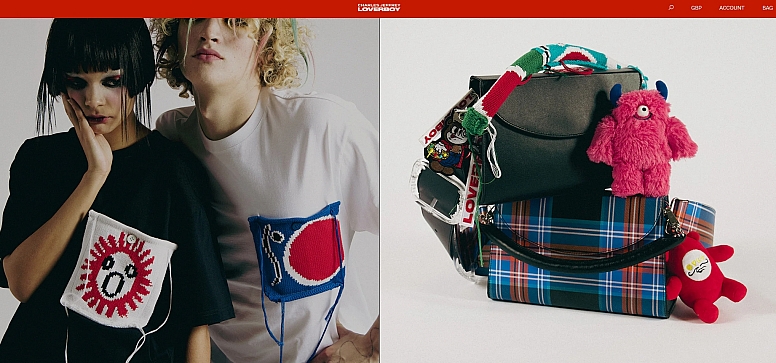
Designer’s Background
Charles Jeffrey, a graduate of Central Saint Martins, is the creative force behind Loverboy. Jeffrey’s background in fashion and his vibrant, eccentric personal style heavily influence the brand’s aesthetic. Loverboy, launched in 2015, blends elements of punk, club culture, and high fashion, resulting in streetwear that is both avant-garde and accessible.
Fashion-Forward Streetwear Approach
Loverboy’s designs are characterized by bold colours, playful graphics, and experimental silhouettes. The brand frequently draws on queer culture and Jeffrey’s Scottish heritage, creating pieces that are both personal and provocative. Loverboy’s streetwear is not just about making a fashion statement; it’s about challenging norms and celebrating individuality.
Notable Releases and Collections
Key pieces from Loverboy include graphic tees, oversized sweaters, and statement accessories. The brand’s collections often feature intricate embroidery, hand-drawn illustrations, and unexpected materials. Notable releases have included collaborations with major fashion houses and exclusive items that showcase Jeffrey’s unique vision.
Places+Faces
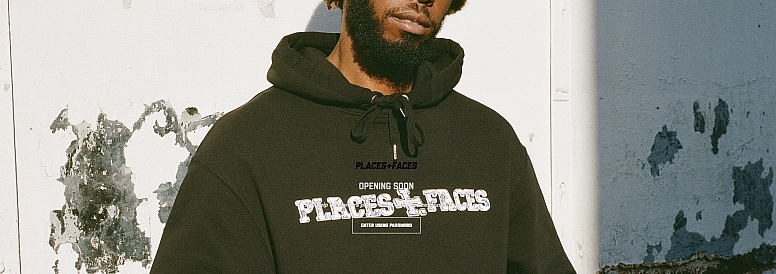
Founders and Origins
Places+Faces was founded by Imran Ciesay and Solomon Boyede (aka Soulz) in 2013. The brand began as a photography project, capturing candid moments of celebrities and influencers in various locations. This unique blend of photography and fashion quickly gained traction, leading to the launch of a streetwear line that embodies the brand’s visual aesthetic.
Blend of Fashion and Photography
Places+Faces is known for its minimalist designs and iconic logo, often featured on hoodies, T-shirts, and accessories. The brand’s clothing serves as a canvas for its photography, with many pieces featuring prints of the founders’ original photos. This integration of fashion and visual storytelling sets Places+Faces apart in the streetwear landscape.
Iconic Pieces and Brand Growth
Popular items from Places+Faces include their signature logo hoodies, graphic tees, and crossbody bags. The brand has collaborated with various artists and brands, creating limited-edition pieces that celebrate both streetwear and photography. Places+Faces has grown from a niche project to a global phenomenon, with a strong presence in both London and international markets.
Influences on London Streetwear
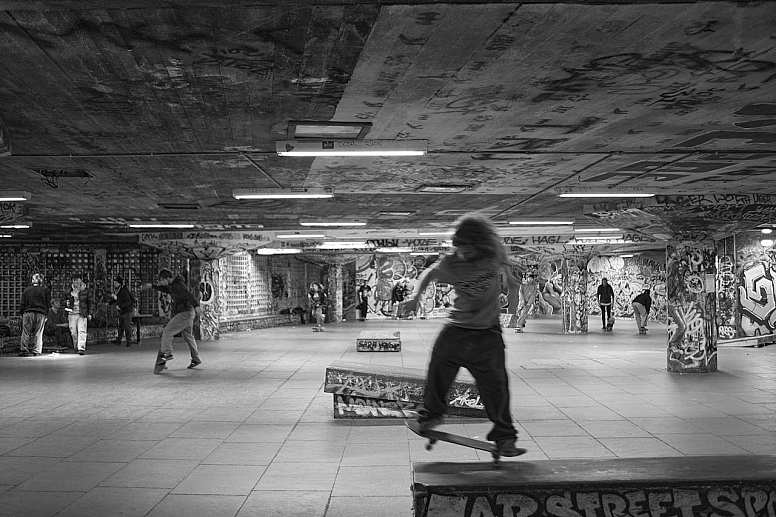
Music and Street Culture
Impact of Grime, Hip-Hop, and Punk
Music has always been a cornerstone of streetwear culture, and London is no exception. The city's streetwear scene is heavily influenced by its diverse and vibrant music landscape, particularly grime, hip-hop, and punk.
-
Grime: Emerging from the East London underground scene in the early 2000s, grime music has had a profound impact on streetwear. Artists like Dizzee Rascal, Skepta, and Stormzy are not only influential musicians but also fashion icons who have popularized brands like Trapstar and A-COLD-WALL*. Grime’s raw, gritty aesthetic is reflected in the streetwear styles favoured by its fans, characterized by tracksuits, hoodies, and bold graphics.
-
Hip-Hop: London’s hip-hop scene, while influenced by its American counterpart, has its own distinct flavour that blends with local culture. This genre’s influence is evident in the popularity of oversized clothing, graphic tees, and street-savvy accessories. Brands like Palace Skateboards have gained traction partly due to their strong association with hip-hop culture.
-
Punk: The punk movement of the 1970s and 1980s left an indelible mark on London’s fashion landscape. Punk’s DIY ethos, rebellious spirit, and distinctive style elements—such as distressed clothing, safety pins, and bold prints—continue to influence modern streetwear. Brands like SCRT incorporate these elements into their designs, appealing to those who appreciate the fusion of streetwear with punk’s edgy aesthetic.
Role of Music Artists in Popularizing Brands

Music artists play a crucial role in the streetwear ecosystem, often acting as trendsetters and brand ambassadors. Their influence extends beyond music, shaping the fashion choices of their fans and the broader public.
-
Collaborations: Many streetwear brands collaborate with music artists to create exclusive collections that blend fashion with musical influence. For instance, Skepta’s collaborations with Nike and Wizkid’s with Daily Paper have produced highly sought-after pieces that merge the artists' personal styles with the brands' identities.
-
Endorsements: High-profile musicians wearing specific brands significantly boost those brands' visibility and desirability. For example, Rihanna's endorsement of Trapstar and Kanye West’s affinity for A-COLD-WALL* have helped these brands gain international recognition and a loyal following.
Art and Design

Collaboration with Local Artists
London’s streetwear scene is deeply connected to its vibrant art community. Collaborations between streetwear brands and local artists often result in innovative designs that push the boundaries of fashion.
-
Graphic Design: Many streetwear pieces feature artwork created by local graphic designers and illustrators. This not only enhances the aesthetic appeal of the clothing but also provides a platform for artists to showcase their work. Brands like Cav Empt are known for their intricate graphic designs that draw from digital art and cyberpunk themes.
-
Street Art: The city’s rich street art culture also heavily influences streetwear designs. Iconic street artists such as Banksy have inspired many brands to incorporate urban art elements into their collections. These collaborations help to bridge the gap between fashion and street art, creating pieces that resonate with the urban lifestyle.
Street Art and Its Influence on Design
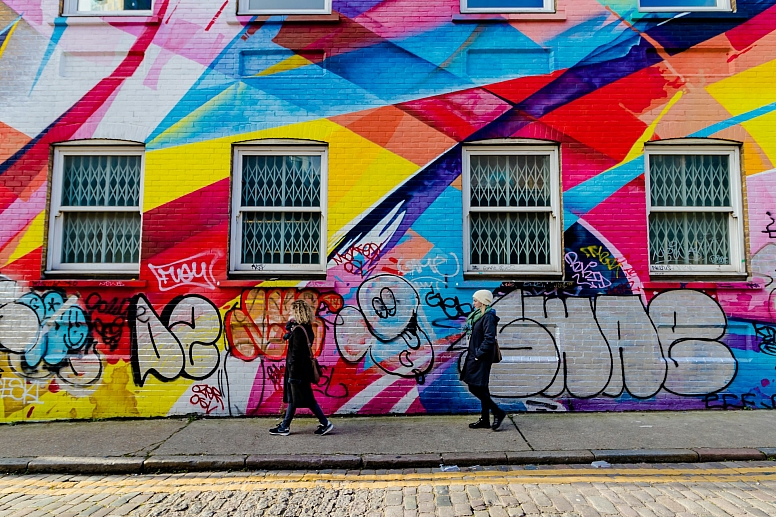
Street art’s bold, unapologetic style is a natural fit for streetwear, which often seeks to make a statement through its designs.
-
Bold Graphics and Prints: Streetwear brands frequently use striking graphics and prints that echo the visual impact of street art. This includes everything from graffiti-style logos to elaborate murals printed on clothing. Palace Skateboards, for instance, often incorporate graphic elements that reflect the raw energy of street art.
-
DIY Aesthetic: The DIY ethos of street art—where artists create and display their work without formal approval—parallels the independent spirit of streetwear. This shared ethos fosters a sense of authenticity and rebellion that appeals to streetwear enthusiasts. Brands like Grind London and SCRT embody this DIY spirit, producing limited-run pieces that feel personal and unique.
Social Media and Influencers
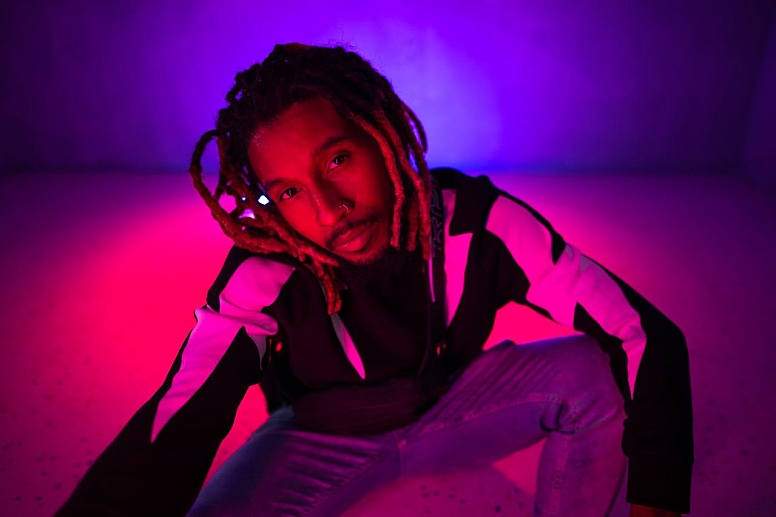
Role of Instagram, TikTok, and Other Platforms
In the digital age, social media platforms are critical in shaping and spreading streetwear trends. Instagram, TikTok, and other platforms serve as both marketing tools and cultural hubs where fashion trends are born and evolve.
-
Instagram: This platform is particularly influential, allowing brands to showcase their latest collections and connect with followers directly. High-quality visuals, behind-the-scenes content, and influencer partnerships help to build a brand’s image and attract a global audience. Brands like Daily Paper and Places+Faces use Instagram to maintain a strong visual identity and engage with their community.
-
TikTok: TikTok’s short-form video format is perfect for showcasing streetwear in dynamic, creative ways. Fashion challenges, styling tips, and haul videos help brands reach younger audiences who are highly engaged with streetwear culture. Viral trends on TikTok can quickly propel a brand to new levels of popularity.
Influencers and Their Impact on Brand Popularity
Influencers play a pivotal role in the streetwear industry by bridging the gap between brands and consumers. Their fashion choices, endorsements, and collaborations significantly impact brand visibility and desirability.
-
Brand Ambassadors: Influencers often serve as brand ambassadors, wearing and promoting streetwear brands to their followers. Their endorsement can lend credibility and aspirational value to a brand. For example, influential figures like ASAP Rocky and Virgil Abloh have helped elevate the status of various streetwear brands through their personal endorsements.
-
Content Creation: Influencers create content that showcases how to style streetwear pieces, offering inspiration and driving sales. Their personal styling and authentic recommendations resonate with followers, making them trusted sources of fashion advice. This user-generated content also provides valuable feedback to brands, helping them stay in tune with consumer preferences.
In summary, the influences on London streetwear are multifaceted, encompassing music, art, social media, and influencer culture. These elements collectively shape the dynamic and ever-evolving landscape of streetwear in the city, making it a vibrant and integral part of London’s fashion identity.
Shopping Destinations for Streetwear in London
Key Streetwear Stores
End Clothing
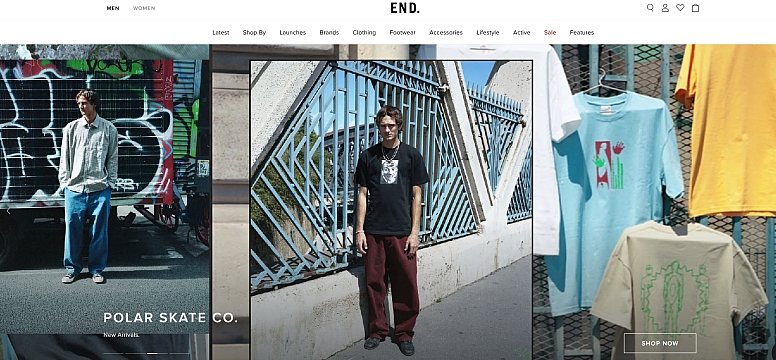
Location and Overview: End Clothing is located in Soho, one of London’s most vibrant and fashion-forward districts. The store is situated at 59 Broadwick Street, a central spot that attracts both locals and tourists alike.
Brand Selection: End Clothing offers an impressive selection of streetwear brands, ranging from established names like Off-White, Stone Island, and Supreme to emerging labels such as Aries and Clints. The store’s curated collection ensures that shoppers can find the latest trends and exclusive drops all in one place.
Shopping Experience: End Clothing provides a premium shopping experience with its sleek, modern interior and knowledgeable staff. The store frequently hosts special events and launches, making it a go-to destination for streetwear enthusiasts looking to stay ahead of the curve.
Footpatrol
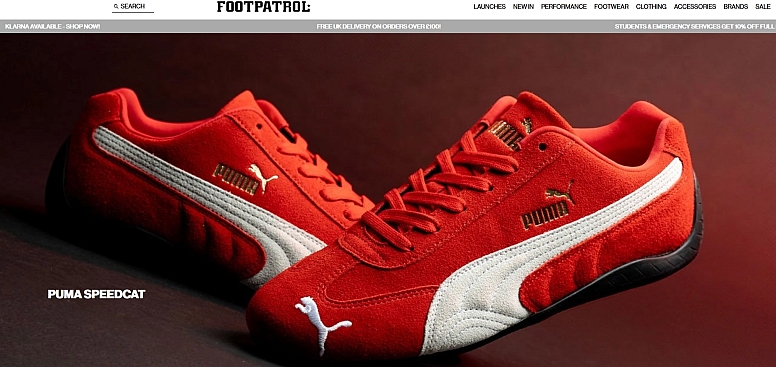
Location and Overview: Footpatrol is located in Soho at 80 Berwick Street. Known as the “home of the rarest sneakers in London,” Footpatrol is a must-visit for sneakerheads and streetwear aficionados.
Brand Selection: The store specializes in exclusive and limited-edition sneakers, featuring brands like Nike, Adidas, and New Balance. In addition to footwear, Footpatrol also stocks a curated selection of streetwear from brands like Stüssy, Carhartt WIP, and Neighborhood.
Shopping Experience: Footpatrol’s intimate and carefully designed store layout makes it easy to navigate their extensive collection. The staff are passionate and knowledgeable, offering personalized recommendations and insights into the latest releases and trends.
Goodhood

Location and Overview: Goodhood is located in Shoreditch at 151 Curtain Road. This area is known for its creative vibe and independent boutiques, making Goodhood a perfect fit.
Brand Selection: Goodhood’s selection includes a mix of streetwear, lifestyle products, and homeware. The store features brands like Vans, Norse Projects, and Aries, along with its own in-house label. This diverse range caters to those looking for both fashion and unique lifestyle products.
Shopping Experience: Goodhood offers a laid-back, welcoming atmosphere with an emphasis on creativity and individuality. The store frequently collaborates with artists and designers, offering exclusive pieces that reflect its innovative spirit.
Pop-Up Shops and Markets
Boxpark Shoreditch

Concept and Location: Boxpark Shoreditch is a pop-up mall located at 2-10 Bethnal Green Road. Made from repurposed shipping containers, Boxpark combines retail, dining, and entertainment in one dynamic space.
Brand Highlights: Boxpark hosts a rotating selection of pop-up shops from both established and up-and-coming streetwear brands. Past tenants have included brands like Nike, Champion, and local labels looking to make a mark.
Shopping Experience: The ever-changing lineup at Boxpark ensures there’s always something new to discover. Its vibrant atmosphere, complete with street food vendors and live music, makes it a popular destination for those looking to immerse themselves in London’s streetwear culture.
The Basement Pop-Up Events
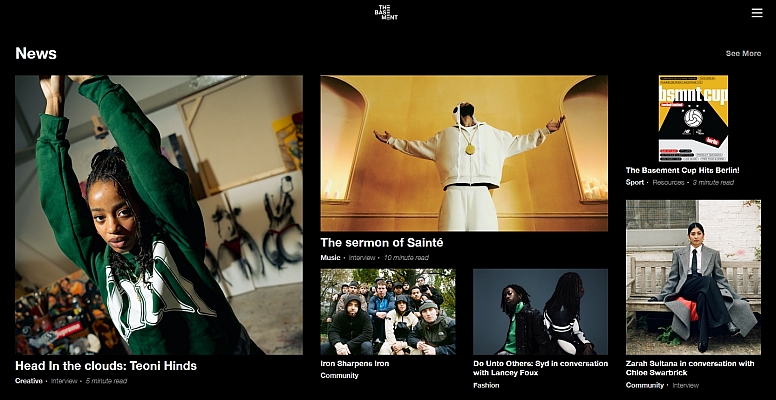
Community and Concept: The Basement is a collective and community dedicated to streetwear and youth culture. Known for its influential presence on social media, The Basement also organizes pop-up events and collaborations.
Brand Highlights: The Basement’s pop-up events feature exclusive drops from their own label as well as collaborations with other streetwear brands. These events often include limited-edition pieces that are highly sought after by the community.
Shopping Experience: The Basement’s pop-up events are more than just shopping opportunities; they’re cultural gatherings. Attendees can meet like-minded individuals, participate in discussions, and enjoy live performances, making these events a unique and immersive experience.
Camden Market

Historical Context and Location: Camden Market, located at Camden Lock Place, is one of London’s most iconic markets, known for its eclectic mix of stalls and vibrant atmosphere. Historically a hub for counterculture, Camden Market continues to be a hotspot for alternative fashion and streetwear.
Brand Highlights: The market features a variety of independent streetwear vendors offering everything from vintage pieces to contemporary designs. Shoppers can find unique items that aren’t available in mainstream stores, often at more affordable prices.
Shopping Experience: Camden Market’s bustling environment and diverse offerings make it a treasure trove for streetwear enthusiasts. The market’s mix of food stalls, live music, and street performances adds to the overall experience, making it a must-visit destination for anyone exploring London’s streetwear scene.
Future Trends in London Streetwear
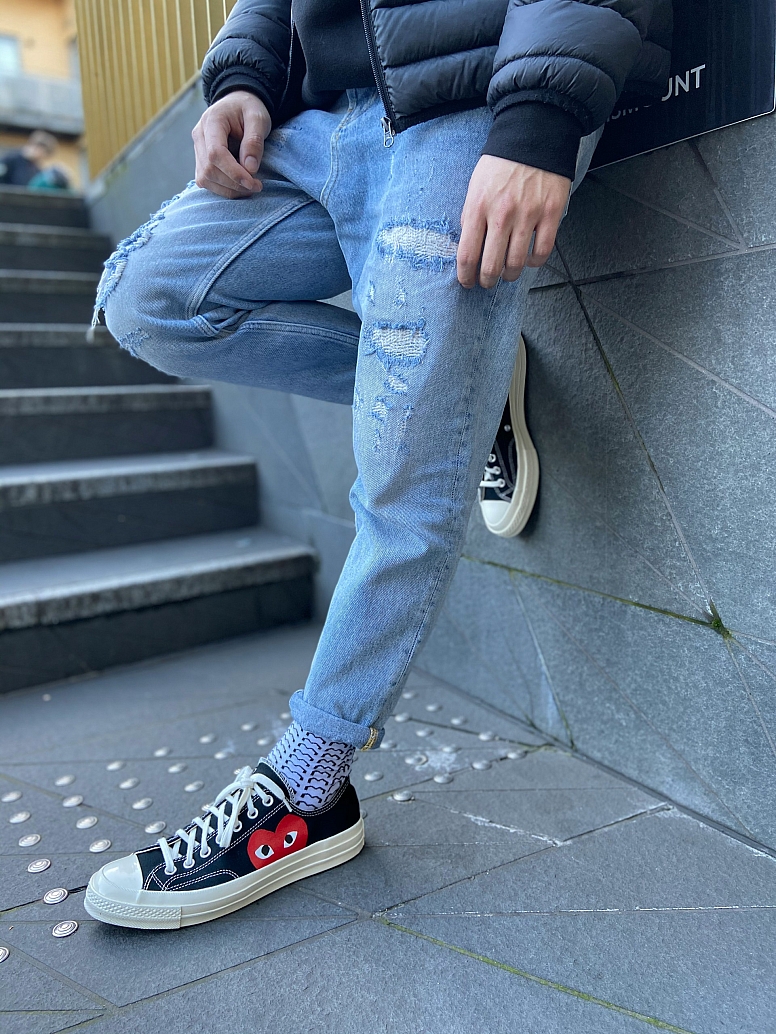
Sustainability and Ethical Fashion
Growing Importance of Sustainability
Sustainability has become a crucial consideration in the fashion industry, and streetwear is no exception. As consumers become more environmentally conscious, streetwear brands in London are increasingly adopting sustainable practices.
-
Eco-Friendly Materials: Brands are exploring the use of organic cotton, recycled polyester, and other sustainable materials to reduce their environmental footprint. This shift is driven by both consumer demand and a growing awareness of the fashion industry’s impact on the planet.
-
Ethical Production: There is a rising emphasis on ethical production methods, ensuring fair wages and safe working conditions for garment workers. Brands are becoming more transparent about their supply chains, allowing consumers to make informed choices.
Brands Leading the Charge
Several London streetwear brands are at the forefront of the sustainability movement:
-
Grind London: Known for its minimalist and refined designs, Grind London places a strong emphasis on ethical production and high-quality materials. The brand's commitment to sustainability is evident in its collections, which often feature organic fabrics and eco-friendly dyeing processes.
-
A-COLD-WALL*: Samuel Ross’s brand not only addresses social issues through its designs but also prioritizes sustainable practices. The brand has introduced collections made from recycled materials and continually explores innovative approaches to reduce waste.
Consumer Awareness and Demand
Consumers are becoming more aware of the environmental and social impact of their purchases. This awareness is driving demand for sustainable and ethically produced streetwear. Brands that can demonstrate a genuine commitment to these values are likely to attract a loyal customer base and set new standards for the industry.
Tech Integration and Innovation
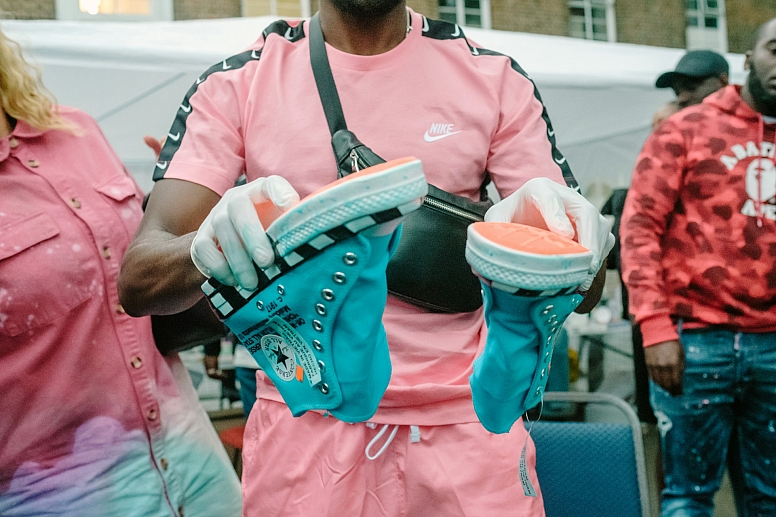
Smart Clothing and Wearable Tech
The integration of technology into streetwear is an exciting trend that is transforming the industry. Smart clothing and wearable tech offer new possibilities for functionality and design.
-
Wearable Technology: Innovations such as fitness trackers, built-in speakers, and LED displays are being incorporated into streetwear pieces. These features add a new dimension to clothing, making it not only a fashion statement but also a functional accessory.
-
Interactive Designs: Some brands are experimenting with interactive designs that respond to environmental changes. For instance, materials that change colour with temperature or light conditions add a unique and futuristic element to streetwear.
Digital Fashion and Augmented Reality
Digital fashion and augmented reality (AR) are also making waves in the streetwear scene.
-
Digital Clothing: Brands are creating digital versions of their clothing that can be worn in virtual environments. This trend caters to the growing popularity of virtual worlds and gaming, offering a new way for consumers to express their style online.
-
AR Shopping Experiences: Augmented reality is enhancing the shopping experience by allowing consumers to virtually try on clothes before purchasing. This technology helps bridge the gap between online and in-store shopping, providing a more interactive and personalized experience.
Cultural and Social Influences
Diversity and Inclusion
Diversity and inclusion are becoming central themes in the streetwear industry. London’s multicultural landscape provides a rich backdrop for brands to draw inspiration from different cultures and communities.
-
Plus Sizing: Brands are expanding their size ranges to cater to a broader audience. This inclusivity helps make streetwear more accessible and appealing to everyone, regardless of body type.
-
Cultural Representation: Streetwear brands are increasingly celebrating and incorporating elements from various cultures into their designs. This trend not only promotes diversity but also fosters a deeper connection with different communities.
Social Justice and Activism
Streetwear has always been a platform for self-expression and social commentary. In recent years, brands have become more vocal about social justice issues, using their platforms to advocate for change.
-
Collaborations with Activists: Collaborations between streetwear brands and social activists are becoming more common. These partnerships often result in collections that raise awareness and funds for important causes.
-
Political and Social Messages: Clothing is being used as a canvas to convey political and social messages. Slogans, graphics, and designs that address issues such as racial equality, environmental sustainability, and mental health are resonating with consumers who want their fashion choices to reflect their values.
If you’re a streetwear enthusiast looking to level up your fashion game without breaking the bank, mastering a few Carlton London shopping hacks can make a world of difference. Carlton London, known for its trendy footwear and chic accessories, often runs exclusive deals and seasonal discounts both online and in stores. Keeping an eye on flash sales, subscribing to newsletters, and following official social media channels can help you snag stylish sneakers, boots, and bags at unbeatable prices.
Additionally, shopping during festive periods or using verified coupon platforms can further maximize your savings. By combining smart timing, discount codes, and insider tips, you can enjoy premium London streetwear style while staying within budget — proving that fashion-forward doesn’t have to mean expensive.
The Evolution and Impact of London Streetwear
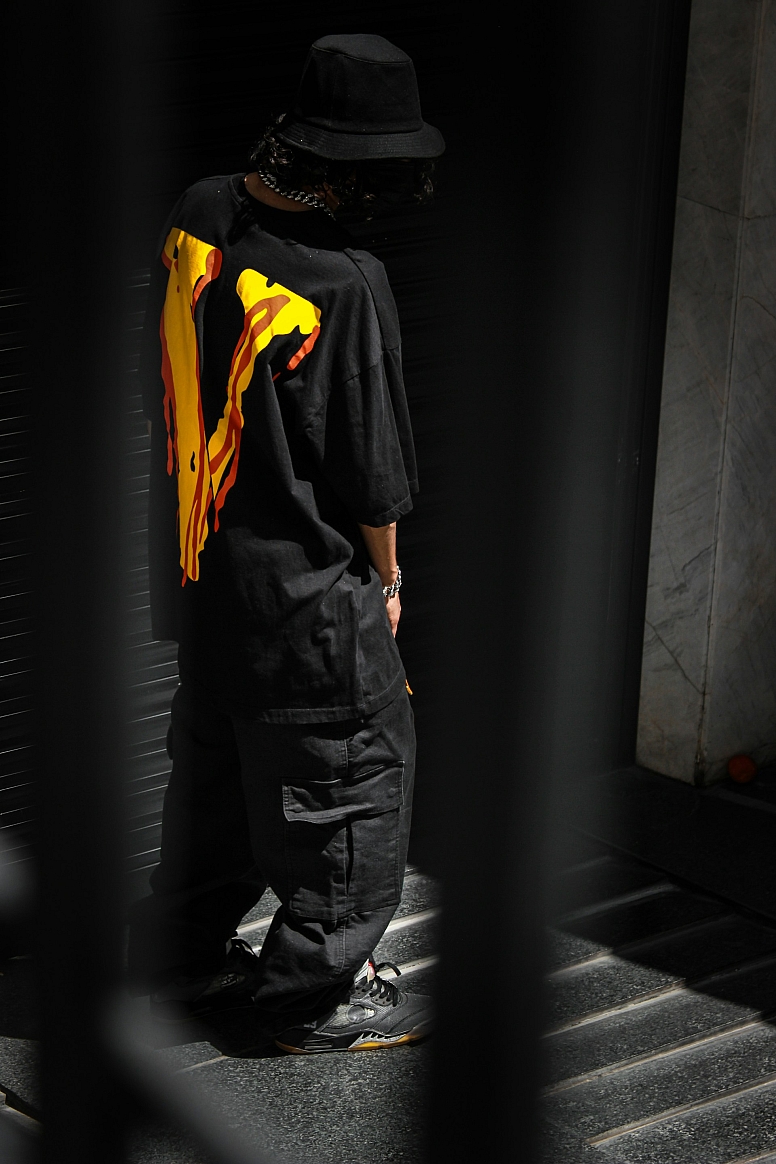
A Melting Pot of Influences
London’s streetwear scene is a testament to the city’s status as a global melting pot of cultures, styles, and influences. From the gritty beats of grime music to the bold strokes of street art, the city’s vibrant cultural landscape shapes and defines its streetwear. Brands like A-COLD-WALL*, Palace, and Daily Paper draw from a rich tapestry of musical, artistic, and social influences to create clothing that is both innovative and deeply rooted in urban culture.
Pioneering Brands and Emerging Talent
The city is home to a mix of pioneering brands that have achieved international acclaim and emerging talents that are pushing the boundaries of fashion. Established names like A-COLD-WALL* and Palace continue to set trends and influence the global streetwear market, while newer brands like Clints and Loverboy inject fresh energy and ideas into the scene. These brands are not just about clothing; they are about creating a lifestyle and a statement, that resonates with a global audience that values authenticity and creativity.
Retail and Community Hubs
London’s retail landscape reflects its dynamic streetwear culture. Iconic stores like End Clothing, Footpatrol, and The Hideout provide curated selections of the latest and greatest in streetwear, while pop-up shops and markets like Boxpark and Camden Market offer unique and ever-changing shopping experiences. These retail spaces are more than just places to buy clothes; they are community hubs where streetwear enthusiasts can connect, share ideas, and stay on the cutting edge of fashion.
The Future of Streetwear in London
Looking ahead, the future of London streetwear is bright and filled with potential. Trends in sustainability and ethical fashion are likely to continue shaping the industry, with consumers increasingly demanding transparency and responsibility from their favourite brands. Technological innovations, from smart clothing to augmented reality shopping, promise to revolutionize the way we interact with fashion. Meanwhile, the city’s diverse and inclusive cultural landscape will continue to inspire brands to create clothing that celebrates individuality and champions social justice.
Global Influence and Local Roots
London’s streetwear scene has a unique ability to blend global influences with local roots. This fusion results in clothing that is not only stylish and trendsetting but also meaningful and reflective of the city’s vibrant culture. As London continues to evolve and grow, its streetwear scene will undoubtedly remain at the forefront of global fashion, influencing trends and setting standards for the industry.
London’s streetwear is more than just a fashion statement; it is a cultural phenomenon that captures the spirit of the city. From the pioneering brands that have put London on the map to the emerging talents that are redefining what streetwear can be, the city’s influence on the global fashion scene is undeniable. As it continues to innovate and inspire, London will remain a key player in the world of streetwear, shaping trends and setting the agenda for years to come.

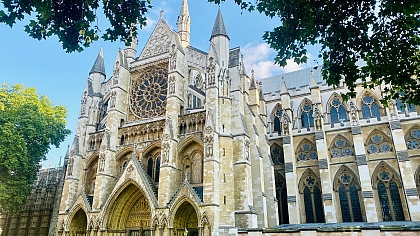
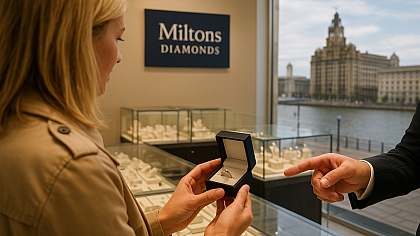
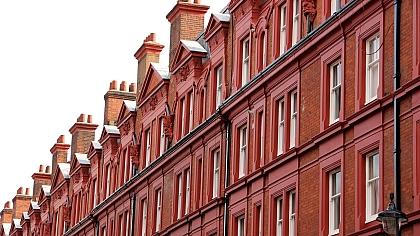
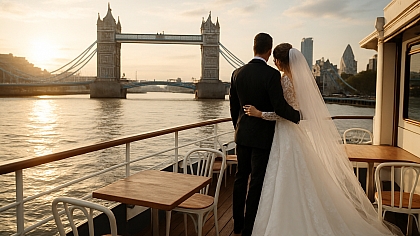
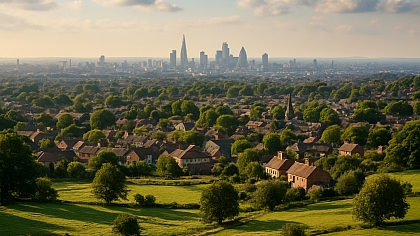
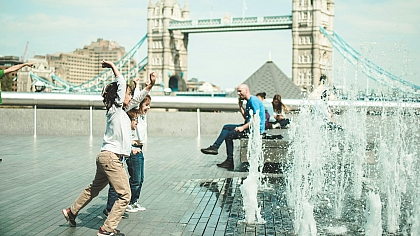
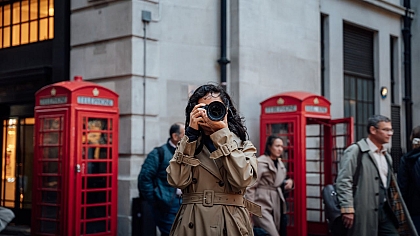
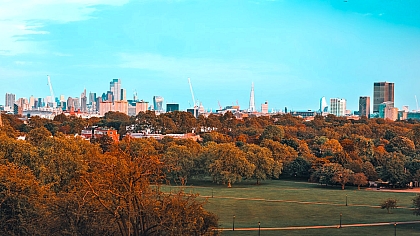
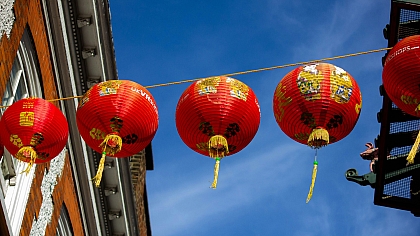
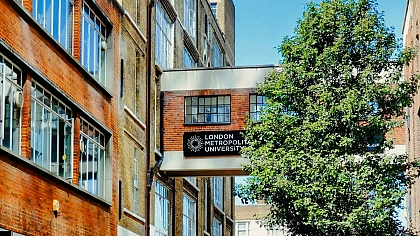
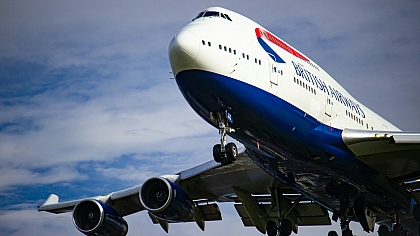
COMMENTS
Just found out there are Anti hero skateboards for sale in AL – stoked! Definitely checking out these boards since they’re known for being top-tier in the skateboarding world.